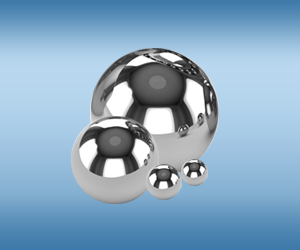
View Sizes, Grades, and Tolerance
Hartford Technologies is the industry leader in the design and manufacture of balls used in regulators.
Pressure regulators are essential in hydraulic systems like those providing lubrication and fuel delivery. Designs vary widely, but many types rely on a precision ball.
Overview of Pressure Regulators
Pumps that push liquid through pipes and galleries are specified to meet peak demand, but much of the time they provide more pressure than needed. A regulator can open a bypass passage or restrict the opening the liquid flows through.
Many regulators feature a ball and socket kind of design where fluid flows through the center of the socket. Depending on pressure, the ball can settle into the socket to shut off fluid flow, or move out to provide an opening.
Materials and Sizes for Precision Balls
The balls used in regulators are essentially the same as those in ball bearing races, and they are manufactured by the same processes. However, requirements for roundness and sphericity are less demanding. Balls for regulators are typically manufactured to a grade of 100; sometimes even 300 is sufficient. (“Grade” refers to roundness in parts per millionth of an inch. A high-precision bearing assembly will use balls of 25 or 50 grade.)
Key factors in material selection are resistance to the liquid being regulated, temperature limits, hardness and impact resistance.
Chrome and stainless steel are used extensively. Stainless balls are available in several grades to suit the particular application. Other options are tungsten carbide, glass, brass and even various types of plastic.
Potential Materials:
- Chrome
- Stainless steel
- Tungsten Carbide
- Glass Brass






